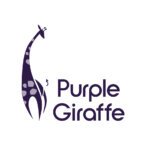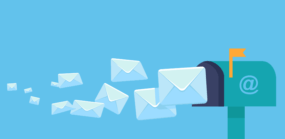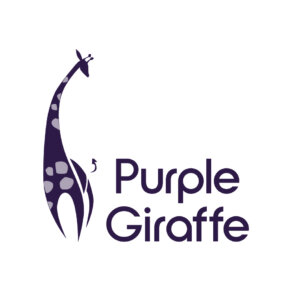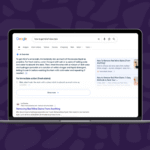Email marketing remains the most cost effective and direct way to reach your customers at their leisure. To get it right when using this medium a business must use judgement, and restraint and act responsibly to keep the trust and therefore patronage of each subscriber. Here are some tips to keep in mind when using email in your marketing strategy to ensure your list is always happy to hear from you and continues to grow.
Make it Easy to Subscribe
Post a signup form on your homepage and/or blog. Collect permission and emails with every sale. Have a easy to see sign up button on your Facebook page, and wherever else your customers and fans are active, but don’t go crazy with the required fields. A too-long subscribe form will deter people.
Let Your List Know What To Expect
No matter what you are sending (newsletters, advice and tips, sales, letetrs, daily deals), it’s important to tell your readers what and how often to expect it. Give them as much information as possible on your signup form, so they can decide whether they want to be on the list or not.
Send a Welcome Email
It’s a good idea to remind people why they’re on your list and excite them that good things are in store. You might even send new subscribers a special offer, discount code or special content to thank them for signing up.
Make Sure Your Emails are in Line with Your Branding
Your email campaigns should match your brand’s look and feel. If you’re using a template, customise it to include your company’s colors and logo in the header. If your emails look like they come from you, then readers will feel more familiar from the start.
Short, Sharp and Shiny
Its very likely your subscribers are busy people who get a lot of emails, so it’s safe to assume you don’t have their undivided attention. Instead of one long block, break up your content into short paragraphs and make the title short and direct. Include subheadings and images to guide readers through your email and make it easier to scan, and add a teaser to the top of your newsletter to tell subscribers what’s in store.
Send the Right Content
Email newsletter services offer features like groups and segmentation to help you make your content relevant to the people reading it. If you’re sending different emails for different groups then you can ask people to check a box to join a particular group on your signup form. Segmentation allows you to target certain subscribers on your list without assigning them to group and send the specific emails based on their preferences, location, interests and demographics. Sending relevant content will keep your readers engaged, and engaged readers look forward to your newsletter and share it with friends.
Be Committed
If you say you are going to write a blog, or a newsletter or send a letter each month then do it! If you go several months without sending anything and your subscribers are expecting to hear from you, then your subscribers may forget about you, or be more likely to delete the next email, or worse, mark it as spam. Make time to plan, write, design, and send your communications via email as per your original commitment.
Get Someone to Check Your Work
Even editors need editors so leave plenty of time for the editing and revision process and don’t do it yourself if possible. Newsletters and other emails should contain meaningful content, and sloppy ones reflect poorly on the companies who send them. Grammar and style are just as important for email as they are for websites and blogs. Also, its often a good idea to send a couple of test emails and view them on different devices as this can change how they are viewed and affect the editing process.
Be Mobile
If a campaign doesn’t show up on mobile devices, it’s not going to perform very well. Everything you send should be mobile-friendly and use a responsive template.
Don’t Send Spam
A lot of innocent companies wanting to do the right thing send spam because they don’t realise they are doing it. Generally you’re allowed to send bulk email only to people who specifically asked to be on your mailing list. If you collected email addresses for a lunch giveaway or an event invitation, then you don’t have permission to send marketing emails unless you made that clear at signup. Include an obvious unsubscribe link in every email, and its always a good idea to remind subscribers how they got on your list in each marketing email you send.
Sharing is Caring
If possible try to send content that people want to share, and make it easy for them to do it. Encourage subscribers can forward your campaign to friends. Include a public link to the web version of your campaign so people can read it outside of their email programs, and add your social media platform links to your newsletter, so readers can share your content where they’re already active.
Review Your Performance
Most email newsletter services offer free reports that contain helpful information about how successful you have been via your email campaign. Learn how to read and understand your reports, so you can use the stats to improve your campaigns moving forward.
Strike Up a Conversation
It’s a good idea to use a friendly tone in your email newsletters as generally people expect less formal voices in their inboxes. They’ve given you their email address, so you’re already on a first-name basis. If you collect first names on your signup form, you can dynamically include them in your email greetings to personalise your communication.
Don’t Send Pointless Emails
This one seems obvious, but too many companies start email newsletters with no plan and nothing to say. Email is simply a way to publish content—the content itself has to come first and be valued and relevant. Before sending always ask yourself: What’s the goal for this and what do we have to say?
Don’t Send Too Many Emails
Sending out more emails than promised will not necessarily generate better results. If you promised to send one email per week then do not start sending more instead provide options to change their subscription preferences if you think they may be interested in hearing from you more frequently but don’t break your initial promises.
Be a Spy and Keep Abreast of Your Competitors
It’s a good idea to join the mailing list of your closest competitors and see what techniques and content they are using, what kind of emails they send out, how often, what kind of products they promote. Your intention is not to copy or mimic your competitor’s practices but to make sure that you are ahead of them and understand the industry you are in.
Make it East to Unsubscribe
Don’t try to hide the unsubscribe button to keep someone on your list. It’s better to have them unsubscribed rather than have you on their spam list plus if you annoy them they will never come back and could possibly even give you negative word of mouth.
End Note
The statistics still suggest that email marketing is still one of the most successful and direct ways you can communicate with your business community. If you get it right your emails will be well received, successful and a cost-effective and fantastic way to talk to e







